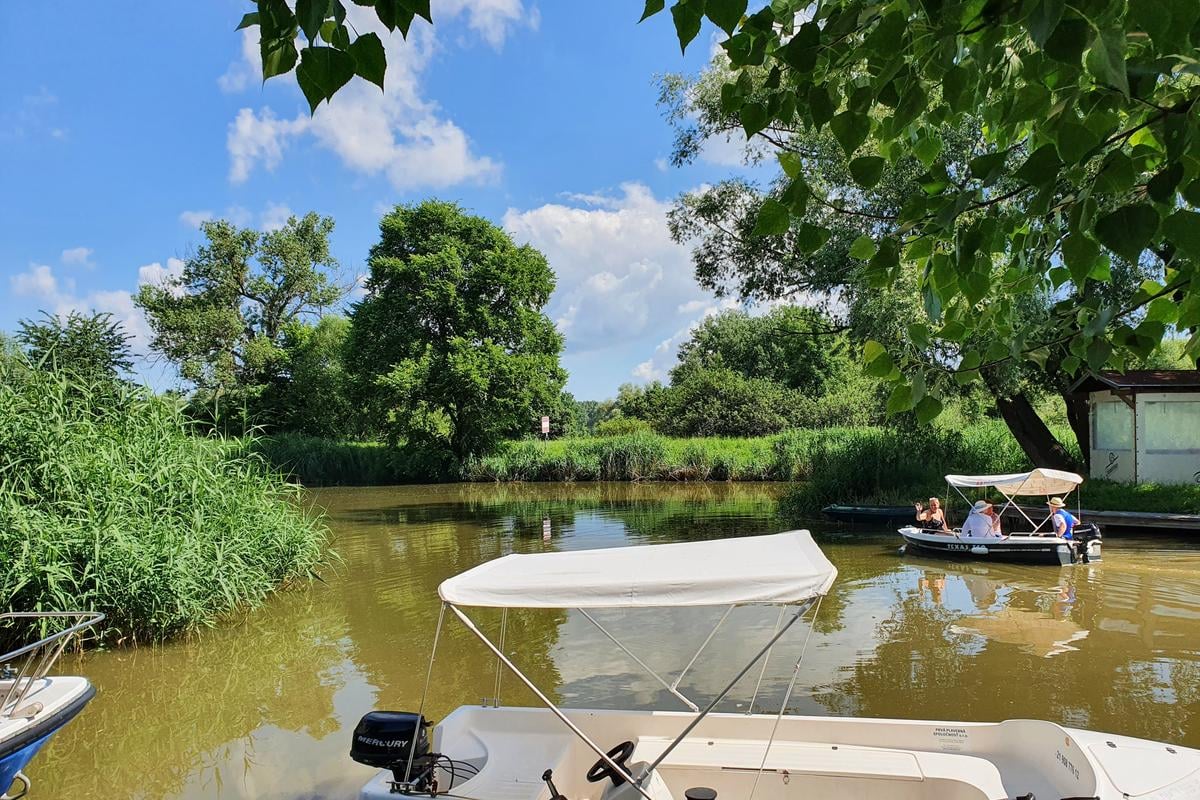By Compiled by Spectator staff
Copyright sme

The Baťa Canal, a historic waterway that runs for most of its length through the Czech Republic near the border with Slovakia, has just been extended by seven kilometres directly along the Slovak-Czech border, opening new possibilities for tourism on both sides of the Morava River, writes Denník N. For Slovakia, the move could mean more visitors, more boats, and more business. But it also highlights problems: poor infrastructure, lack of state support from the Slovak side, and controversial industrial plans near the canal.
On Friday, September 19 a new lock at Rohatec-Sudoměřice was put into trial operation, allowing boats to reach the Czech town of Hodonín. It is the first major extension of the canal in 90 years. “The canal now reaches places it has never gone before,” said Vojtěch Bártek, head of the Czech non-profit company Baťův kanál.
Tourism potential for Skalica and Holíč
Every year about 100,000 people take a boat trip on the canal, with even more using the cycle paths that run along it. Until now, the Slovak stretch was just 800 metres long, ending at the port of Skalica. With the extension, the waterway connects directly to the Morava River and comes closer to Holíč, creating new possibilities for Slovak towns.
“I expect more boats than ever before to pass through the Skalica port,” said Marián Tongeľ, who rents boats there.
Regional leaders also see the potential. Trnava Region governor Jozef Viskupič said the area “is crying out for more development,” but warned that few politicians in Slovakia recognise the canal’s importance.
A different approach compared to Czechia
The contrast between the two countries is clear. In the Czech Republic, the state invests heavily in the canal, treating it as an official waterway. On the Slovak side, it remains largely neglected.
“The port in Skalica lacks basic services like electricity and drinking water. Comparing it to the Czech side is like comparing night and day,” Viskupič said. Plans exist to expand the port, but the €1.5-million project has no secured funding. Local officials say it is up to the new Ministry of Tourism and Sport, led by Rudolf Huliak, to step in.
Conflict over an incinerator
Not all the news is positive. Slovak oligarch Ivan Kmotrík plans to build a waste incinerator just two kilometres from the canal near Skalica. The project has raised concerns in the neighbouring Czech region of Moravia, where residents and authorities fear pollution and damage to tourism.
“Czechs are investing in the canal for Slovakia, and Slovaks are giving them an incinerator,” Viskupič said. Activists and some local politicians in Skalica are also voicing opposition, though critics say city leaders have been too passive.
What’s next?
The new section will be officially opened on May 1 next year if trial runs go smoothly. In the meantime, Slovak municipalities face a choice: either seize the chance to build infrastructure, cycle paths and attractions, or risk losing out while the Czech side continues to thrive.
For visitors, though, one thing is certain: the Baťa Canal now offers more routes, more scenery, and more reasons to stop and explore.



